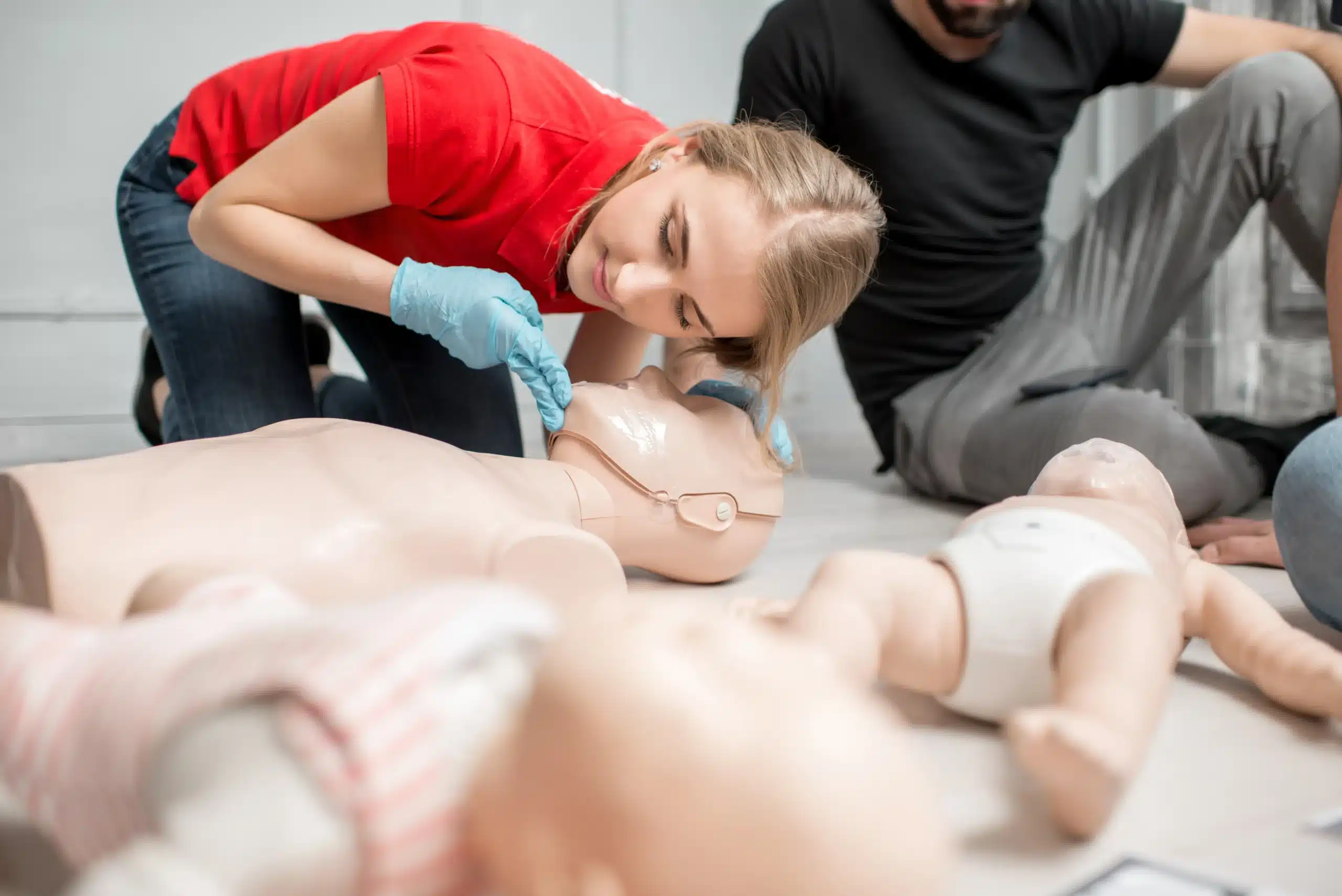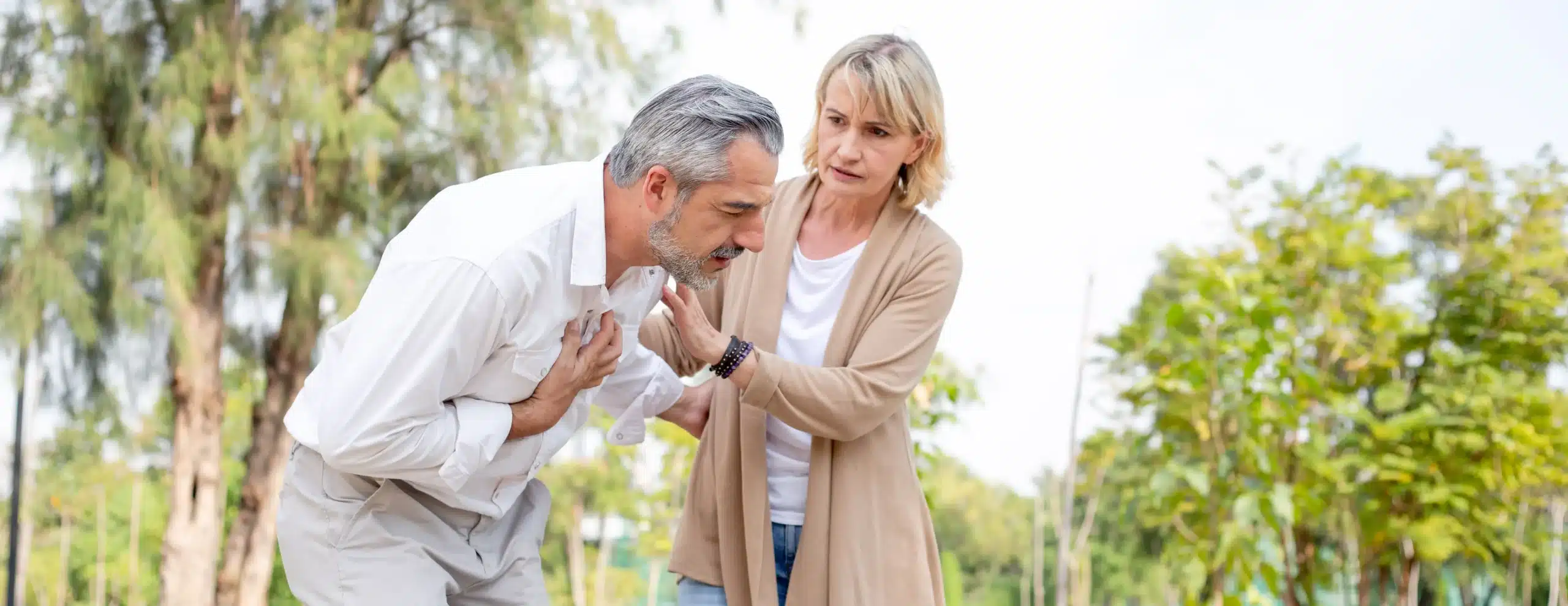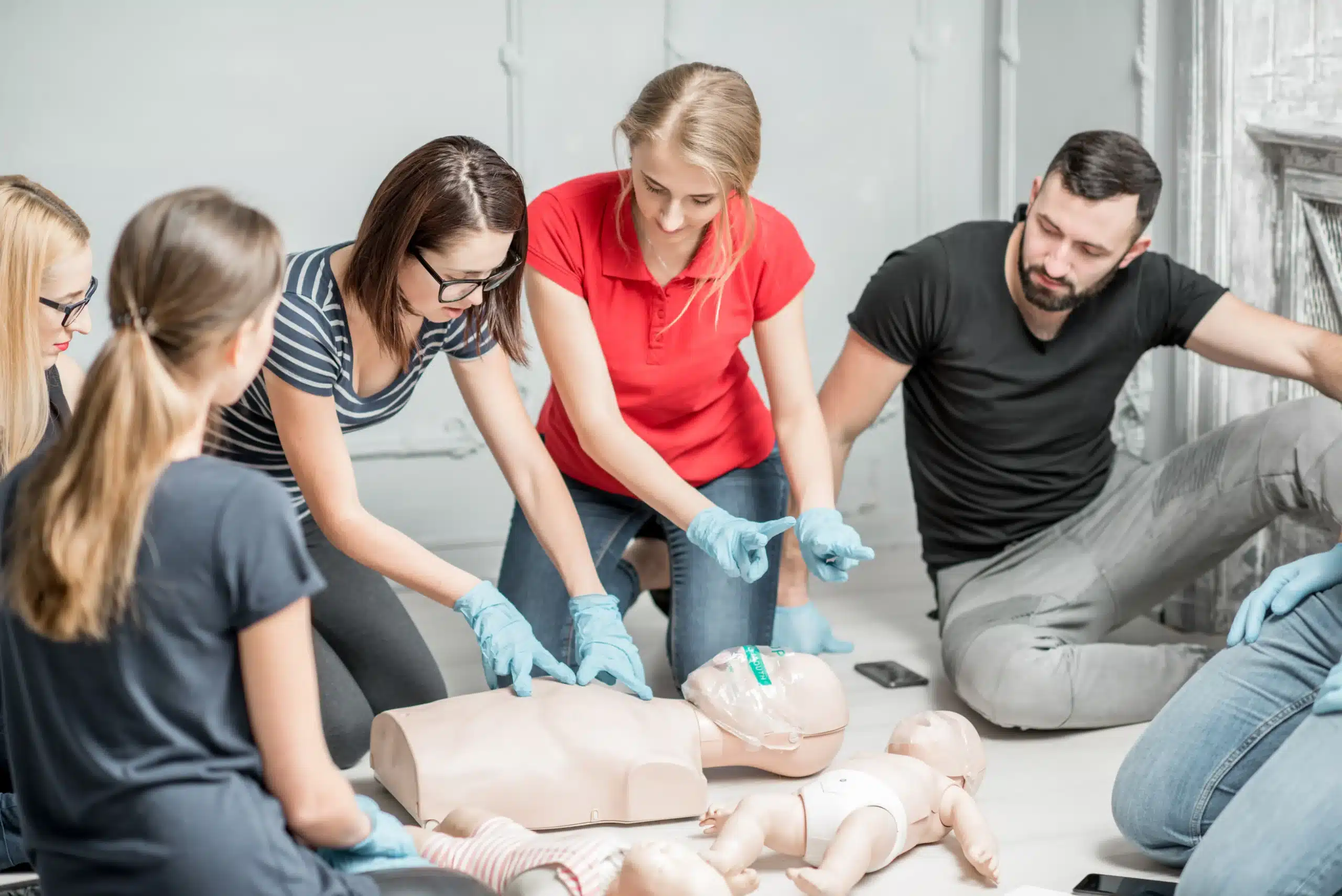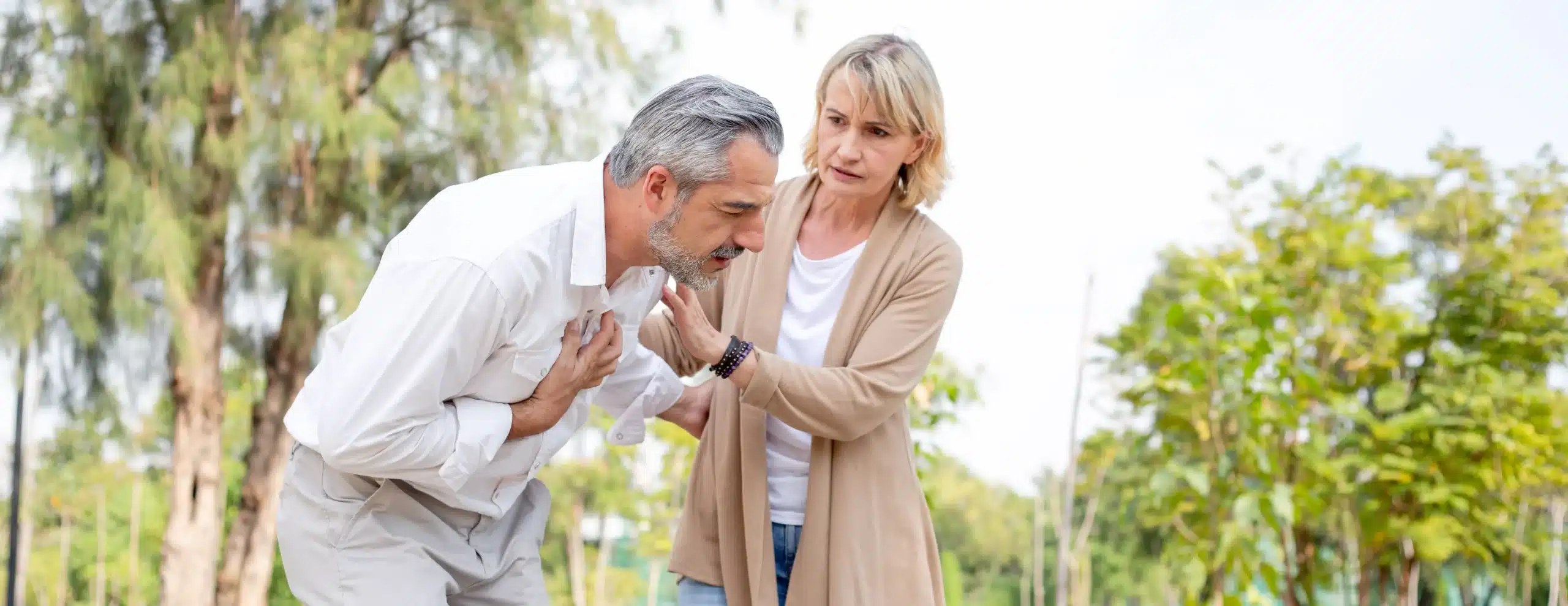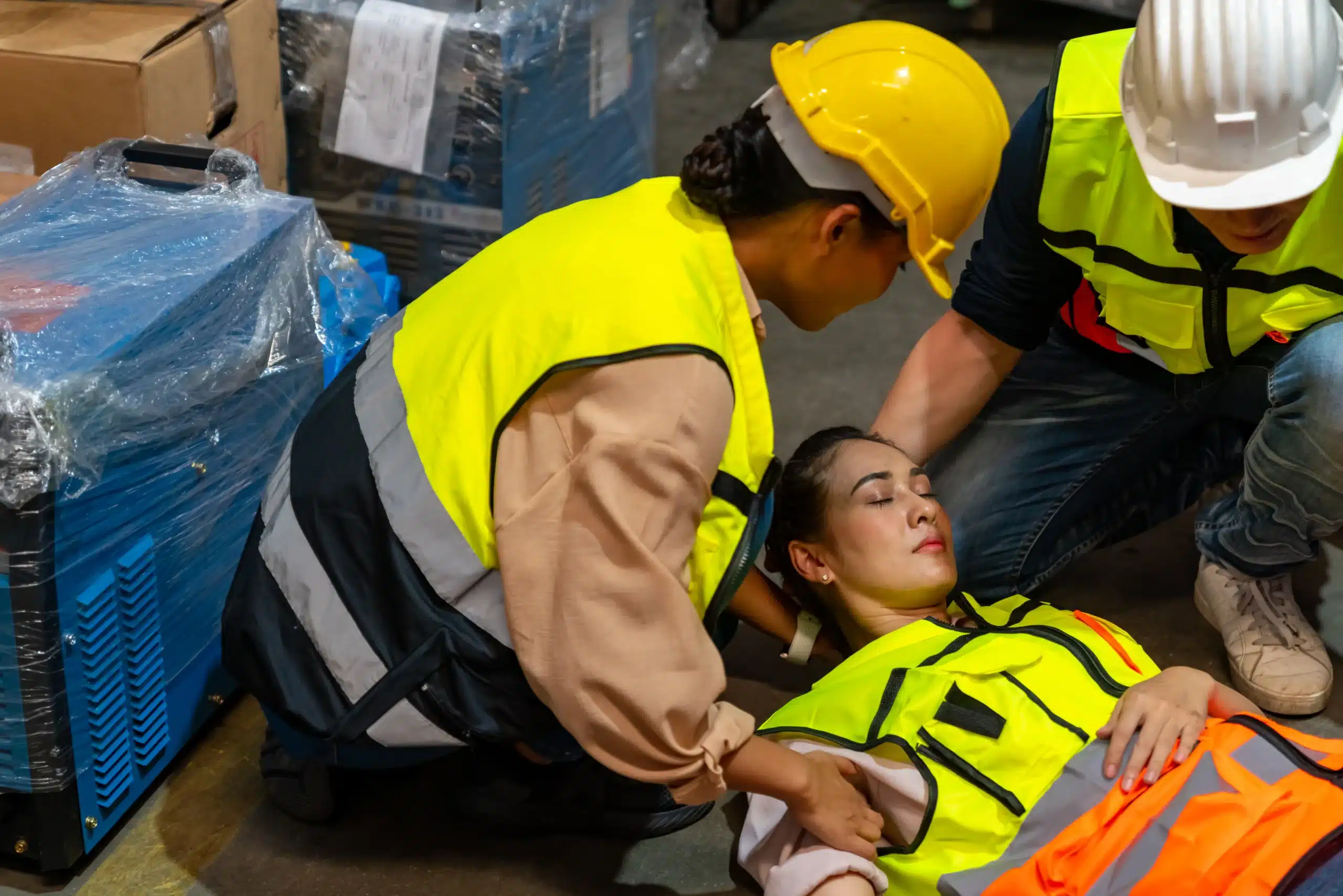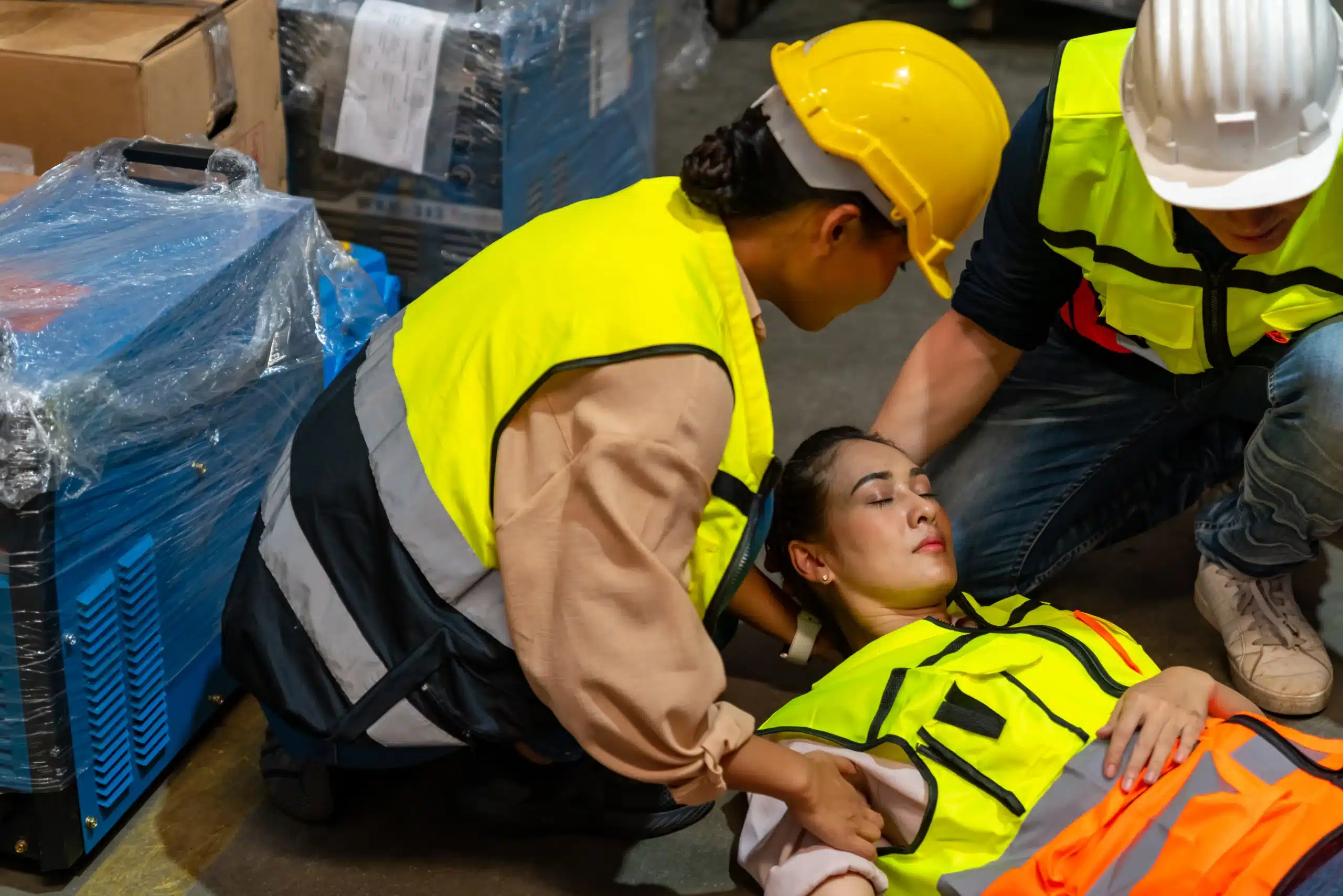Empower yourself with the skills to save a life. BLS certification in Berkeley provides the training and confidence to respond effectively during medical emergencies. This article is your go-to resource for everything related to BLS certification in Berkeley. We’ll cover the essential skills taught in BLS training, the process of getting certified, the costs involved, and the various benefits of having this life-saving certification. We’ll also explore different learning formats, from traditional in-person classes to blended and online options, to help you find the best fit for your schedule and learning style. Join us as we explore the importance of BLS and how you can become a vital link in the chain of survival.
Key Takeaways
- BLS certification provides essential life-saving skills: Learning CPR, AED use, and how to recognize emergencies makes you a valuable asset in any situation, from the workplace to your own home.
- Accessible BLS training is available to fit your needs: Explore various learning formats, including in-person, blended, and online courses, to find a program that works for your schedule and learning preferences.
- Stay prepared by keeping your BLS certification current: Regularly refresh your skills and knowledge through recertification courses to maintain your preparedness and provide effective assistance when needed.
What is BLS Certification?
BLS (Basic Life Support) certification equips people with the skills to respond to life-threatening emergencies like cardiac arrest and respiratory distress. It focuses on providing immediate care until advanced medical personnel arrive. BLS training is crucial for maintaining a safe environment in various settings, from hospitals to workplaces and even at home. It empowers individuals to confidently administer aid, potentially saving lives. The training covers essential techniques such as CPR, recognizing the signs of a heart attack or stroke, and how to use an AED.
Definition and Importance
BLS certification focuses on the immediate response to life-threatening emergencies. It emphasizes providing critical care until paramedics or other advanced medical professionals can take over. This training gives healthcare providers, first responders, and other individuals the skills to assess a situation, perform CPR, relieve choking, and provide basic cardiovascular life support. BLS certification is a vital part of ensuring patient safety and positive outcomes in emergency situations. It’s about being prepared and equipped to make a real difference when every second counts. Effective communication and coordination are also key components of BLS training, especially in team settings.
Key Skills in BLS Training
BLS training covers a range of essential skills, including high-quality CPR for adults, children, and infants. You’ll learn how to recognize the signs of someone having a heart attack or stroke and the appropriate steps to take. The training also covers how to use an automated external defibrillator (AED) effectively and safely. High-quality CPR is a cornerstone of BLS, ensuring proper chest compressions and rescue breaths are delivered. Staying up-to-date with the latest guidelines and techniques is crucial for effective BLS. RQI classes can help maintain and refresh these essential skills.
Who Needs BLS Certification?
While healthcare professionals like doctors, nurses, and paramedics often require BLS certification, it’s also valuable for many other professions. Those working in childcare, education, coaching, personal training, and other fields that involve overseeing the safety and well-being of others can benefit significantly from BLS training. Even if not formally required, having BLS certification can provide peace of mind and the ability to respond effectively in unexpected emergencies. It’s a valuable asset for anyone who wants to be prepared to help in a crisis. Many workplaces encourage or require their employees to obtain BLS certification to create a safer environment for everyone. For those interested in group discounts, Berkeley CPR Classes offers options for businesses and organizations. They also have a low price guarantee, making their courses accessible to a wider audience.
Top BLS Certification Providers in Berkeley
Finding the right BLS certification course can feel overwhelming. To help you, we’ve compiled a list of trusted providers in Berkeley. Whether you’re a healthcare professional, a student, or someone wanting to gain this life-saving skill, there’s a course out there for you.
Berkeley CPR Classes
Berkeley CPR Classes offers American Heart Association-certified BLS courses, including renewal courses. They focus on providing in-person training to equip you with practical skills and the knowledge you need to respond confidently in emergencies. For more information on BLS course offerings, visit their website. They also offer discount group classes and a low price guarantee.
American Heart Association
The American Heart Association (AHA) offers BLS CPR classes in Berkeley. You’ll receive an AHA certification card, valid for two years, upon successfully completing the course. These courses are a great way to gain fundamental life-saving skills.
Red Cross Berkeley
The American Red Cross also offers BLS certification courses. Developed and taught by experts, their courses meet or exceed national standards. This certification is valuable for many professions.
Safety Training Seminars
Safety Training Seminars provides American Heart Association-certified CPR, BLS, ACLS, and PALS courses. They offer a convenient Resuscitation Quality Improvement (RQI) program with online and in-person components. Learn more about their courses on their website. They serve the greater Berkeley area.
Get BLS Certified: The Process
Getting your BLS certification is straightforward. This section breaks down the process into manageable steps, from prerequisites to earning your certification card. We’ll cover everything you need to know to feel confident and prepared.
Enrollment Prerequisites
There are no formal prerequisites for BLS certification. The American Heart Association offers several ways to get your BLS card, including in-person and online courses, making the training accessible to a wide range of people. Whether you’re a healthcare professional, a student, or someone who wants to be prepared for emergencies, you can enroll in a BLS course and begin your training. Check with your chosen provider, like Berkeley CPR Classes, for specific enrollment details.
Course Content Overview
BLS training equips you with the skills to respond effectively during life-threatening emergencies. The curriculum covers core life-saving techniques, including high-quality CPR for adults, children, and infants, how to use an AED, and relief of choking. You’ll learn the importance of recognizing the signs of someone needing CPR and how to provide assistance until professional help arrives. BLS training also emphasizes the importance of teamwork and clear communication in emergency situations. This comprehensive approach ensures you’re prepared to provide assistance in various critical scenarios.
Hands-on Practice
BLS courses aren’t just about lectures and videos. Hands-on practice is a crucial part of the learning process. You’ll work with training manikins to practice CPR techniques, learn how to use an AED, and rehearse responding to different emergency scenarios. This practical experience builds your muscle memory and confidence, ensuring you’re well-prepared for real-life situations. Effective communication and coordination among team members are also practiced, reinforcing the importance of teamwork in providing effective BLS.
Exam and Certification Requirements
After completing the course content and hands-on practice, you’ll need to pass a written exam and a skills test. The written exam assesses your understanding of BLS principles and procedures. The skills test evaluates your ability to perform the techniques learned during the course. You’ll receive your BLS certification card upon successful completion of both the written and skills tests. BLS certification is typically valid for two years, after which you’ll need to renew. Many providers, including Bay Area CPR, issue certification cards on the same day as the skills test.
In-Person vs. Online BLS Certification
Choosing between in-person and online BLS certification often comes down to personal preference, schedule, and budget. Both formats have their own set of advantages and disadvantages. Let’s explore the pros and cons of each to help you decide which learning path is the right fit for you.
Pros and Cons of Each Format
In-person BLS training offers the hands-on experience that many find invaluable for mastering essential CPR techniques. You’ll work directly with certified instructors, receive immediate feedback, and develop the confidence to perform BLS effectively in real-life situations. This hands-on training typically results in a two-year certification that meets OSHA requirements. However, the physical demands of CPR training are worth considering. If you have any physical limitations, it’s important to assess your abilities before signing up. In-person classes also require a more rigid schedule, which may not work for everyone. If you need a more flexible option, online BLS training might be a better choice. Online courses offer convenience and allow you to learn at your own pace, but they may not provide the same level of hands-on practice required for certain certifications, such as those mandated by OSHA. Always check the accreditation of online programs to ensure they meet the necessary standards. For instance, ACLS.com’s online BLS certification is accredited by reputable organizations like the American Dental Association (ADA) and the American Medical Association (AMA).
Blended Learning
If you’re looking for a happy medium between the convenience of online learning and the benefits of hands-on instruction, blended learning is an excellent option. This approach combines online modules with in-person skills sessions. You can learn the theoretical concepts of BLS online at your own speed and then attend a practical session to practice your skills under the guidance of a certified instructor. The American Heart Association offers blended learning programs, like HeartCode BLS, which provides flexibility while ensuring you receive the essential hands-on training. This format is especially well-suited for busy professionals juggling demanding schedules.
Tech-Enhanced Learning Tools
Technology continues to reshape BLS education, offering innovative tools and resources to enhance the learning process and improve skill retention. Interactive simulations, mobile apps, and online platforms provide engaging ways to practice BLS skills beyond the traditional classroom setting. Tools like MediCode and CertAlert+ offer virtual scenarios and personalized feedback, helping you refine your techniques and build confidence. These tech-enhanced learning tools complement traditional training methods and offer valuable support for maintaining your BLS skills between certification renewals. They also make BLS training more accessible to healthcare professionals and individuals in diverse environments.
BLS Course Costs & Duration in Berkeley
If you’re looking to get BLS certified in Berkeley, understanding the costs and time commitment is essential. This section breaks down the typical price range, course duration, and factors influencing these aspects.
Average Prices & Course Length
BLS certification courses in Berkeley typically cost between $95 and $105, depending on the provider and the specific course. This reflects the general cost of CPR training in the area. Most BLS courses run approximately four to six hours. Knowing this helps you compare options and choose a course that fits your budget and schedule. For more information on BLS courses, check out this CPR training guide.
Factors Affecting Cost & Schedule
Several factors can influence BLS course costs. The certifying organization (like the American Heart Association), the course format (in-person, blended, or online), and the training provider all play a role. Course schedules also vary; many providers offer daily classes, sometimes with extended hours.
Low Price Guarantees & Discounts
Looking to save on your BLS certification? Some training providers offer a low-price guarantee. For example, Safety Training Seminars offers this in Alameda County. Organizations like the American Red Cross often have discounts on training materials. You can also explore group discounts for training with colleagues or friends.
Renew Your BLS Certification
Keeping your Basic Life Support (BLS) skills sharp is crucial, especially in healthcare. This section covers everything you need to know about renewing your BLS certification in Berkeley.
BLS Certification Validity
BLS certification, like many healthcare certifications, is valid for two years. This timeframe ensures that professionals regularly refresh their knowledge and skills to align with the latest American Heart Association (AHA) guidelines. Don’t let your certification lapse! Recertification courses are readily available for those whose BLS certification is nearing its expiration date or has already expired. Check your card and plan ahead.
Renewal Process & Requirements
Renewing your BLS certification is straightforward. The American Heart Association offers several convenient options, including in-person and blended learning renewal courses. Berkeley CPR Classes provides a variety of AHA-approved BLS renewal courses tailored to fit your schedule and learning preferences. Visit their website for the latest course offerings and schedules.
Maintain Skills Between Renewals
Staying up-to-date on the most recent protocols for critical care and resuscitation is essential for any healthcare professional. Regular BLS renewal ensures you’re always prepared to provide effective, high-quality care. Consider incorporating regular practice and review into your routine between renewals. Even simple refreshers can significantly improve your confidence and response time in critical situations. This consistent approach to maintaining your skills will not only benefit your patients but also contribute to a safer work environment.
Choose the Right BLS Program
Finding the right BLS program is crucial for receiving high-quality training and obtaining a recognized certification. Here’s what to consider when making your decision:
Accreditation and Recognition
Ensure your chosen program is accredited by a reputable organization like the American Heart Association (AHA). AHA-approved BLS courses, like those offered by Berkeley CPR Classes, adhere to the latest evidence-based guidelines and are widely accepted. This recognition is essential for healthcare professionals and anyone requiring BLS certification for their job.
Instructor Qualifications
Experienced, certified instructors are key to effective BLS training. Look for programs with instructors who have a strong background in healthcare and extensive teaching experience. Their expertise will ensure you learn the skills correctly and gain the confidence to apply them in real-life emergencies. Instructors who actively work in healthcare settings can offer valuable insights and real-world examples, making the training more engaging and relevant.
Course Materials & Resources
High-quality course materials and resources can significantly enhance your learning experience. Modern BLS programs often incorporate tech-enhanced learning tools and blended learning options, offering flexibility and accessibility. Check if the program provides comprehensive manuals, online resources, or practice tests to help you prepare for the certification exam. Access to these resources can make a real difference in your understanding and retention of the material.
Additional Support & Prep Tools
Consider programs that offer additional support and preparatory tools. Some programs provide pre-course materials or online resources to help you stay up-to-date on the latest protocols. This ongoing support is particularly important for healthcare professionals who need to maintain their BLS skills and undergo recertification regularly. Look for programs that offer flexible scheduling options and convenient locations, like Berkeley CPR Classes, which offers classes daily in over 60 cities.
Prepare for Your BLS Course
Getting ready for your BLS course can make a real difference in how well you absorb the information and perform on exam day. A little prep work goes a long way!
Study Tips & Resources
Before your class, familiarize yourself with the American Heart Association resources for BLS. They offer various study materials, including practice tests and skill videos, that can supplement your in-person training. Consider your learning style and schedule when you explore different CPR course formats—in-person, blended learning, or online. Do you prefer hands-on practice or thrive in a more traditional classroom setting? Choosing the right format can significantly impact your learning experience.
Exam Day Expectations
BLS training prepares you for high-stakes situations requiring clear thinking and quick action. Teamwork and communication are key components of BLS, so expect to participate in scenarios that simulate real-life emergencies. These simulations help build confidence and hone your skills in a controlled environment. The goal is to learn how to provide the best possible care under pressure.
Pre-Course Materials & Online Resources
Many BLS courses offer online resources and pre-course materials to help you get a head start. Online and blended learning options offer flexibility and make BLS training more accessible. Reviewing these materials beforehand can familiarize you with essential concepts like CPR and other basic cardiovascular life support skills, crucial for both in-hospital and out-of-hospital settings. Understanding the importance of BLS certification can also motivate you throughout the course. This preparation allows you to focus on mastering practical skills during your in-person training.
Overcome BLS Certification Challenges
Getting your BLS certification is essential for many roles, but it can feel like a hurdle. We get it—life is busy. This section addresses common challenges and offers practical solutions to help you succeed.
Manage Time Constraints
One of the biggest challenges people face is finding the time for BLS training. Between work, family, and other commitments, carving out time for a course can be tough. Thankfully, there are ways to make it work. Look for providers like Berkeley CPR Classes that offer a variety of class times, including evenings and weekends. This flexibility allows you to choose a schedule that fits your life. Consider online or blended learning options, which offer greater control over your study pace. Blended learning combines online coursework with in-person skills sessions.
Access Courses & Training
Finding a convenient and accessible course is another common challenge. Some people prefer traditional in-person classes, while others need the flexibility of online learning. The American Heart Association offers various options for BLS certification and renewal, including both in-person and online courses. Explore different training formats and choose the one that best suits your learning style and location. Berkeley CPR Classes offers courses in over 60 cities.
Address Exam Anxiety
It’s normal to feel some anxiety about the BLS exam, especially if you haven’t taken a test in a while. Thorough preparation is one of the best ways to combat this. Familiarize yourself with the course content and practice the skills regularly. BLS emphasizes teamwork and communication, so practicing with others can build confidence. Staying up-to-date on the latest protocols and techniques will improve your performance on the exam and enhance your ability to provide effective care. Learn more about the importance of staying current with your BLS certification.
Impact & Benefits of BLS in Berkeley
Getting your BLS certification is more than just checking a box; it’s an investment in yourself and your community. Whether you’re a healthcare provider, a teacher, or a parent, BLS training equips you with the skills to make a real difference. Here’s how
Improve Emergency Preparedness
Emergencies can happen anytime, anywhere. BLS certification empowers you to respond effectively in those critical moments. With BLS training, you gain the confidence to act quickly and provide essential life support until professional help arrives. This rapid response can significantly improve the outcome of medical emergencies, potentially saving lives. Think of it as having a crucial skill set readily available, whether at home, in the workplace, or out in the community. You become a vital link in the chain of survival, ready to assist those in need. This preparedness not only benefits individuals but also strengthens the overall resilience of our community. BLS training provides healthcare professionals with life-saving skills for emergency situations.
Improve Workplace Safety
Many workplaces, especially those in healthcare, require BLS certification. This requirement isn’t arbitrary; it reflects the importance of having trained professionals who can respond to medical crises on the job. Regular BLS recertification ensures that healthcare professionals stay up-to-date on the latest protocols for critical care and resuscitation. By maintaining your BLS certification, you contribute to a safer work environment for everyone. This not only protects your colleagues but also demonstrates your commitment to providing high-quality care. For businesses, investing in BLS training for employees can reduce workplace accidents and create a more prepared and confident team.
Contribute to Community Health & Safety
BLS-certified individuals play a crucial role in community health and safety. Bystanders trained in BLS can provide immediate assistance during emergencies, bridging the gap before professional responders arrive. This community-wide preparedness creates a network of support, ensuring that more people have access to timely and potentially life-saving interventions. Using interactive tools and apps can help people practice and retain these important BLS skills. Berkeley CPR Classes offers a variety of courses, including discount group classes, making BLS training accessible to everyone in our community. Consider getting certified – you could be the one who makes all the difference in a critical situation.
Related Articles
- BLS Renewal in Berkeley: Your Go-To Guide – Berkeley CPR Classes
- HeartCode BLS in Berkeley: Your Guide to Certification – Berkeley CPR Classes
- BLS Renewal in Oakland: Your Guide – Berkeley CPR Classes
- HeartCode BLS in Alameda: Your Guide to Certification – Berkeley CPR Classes
- Online CPR Classes in Alameda: A Practical Guide – Berkeley CPR Classes
Frequently Asked Questions
How long does it take to get BLS certified? BLS courses typically take between four and six hours to complete, depending on the training provider and the specific course format you choose. Some providers offer expedited courses, while others might have more extended programs that cover additional topics.
What’s the difference between BLS and CPR? CPR (Cardiopulmonary Resuscitation) is a specific technique used within BLS (Basic Life Support). BLS encompasses a broader range of life-saving skills, including CPR, recognizing the signs of a heart attack or stroke, using an AED, and relieving choking. Think of CPR as one of the tools in the BLS toolkit.
How much does BLS certification cost in Berkeley? The cost of BLS certification in Berkeley typically ranges from $95 to $105. Prices can vary based on the training provider, the course format (in-person, blended, or online), and whether you qualify for any discounts. Some providers offer a low-price guarantee, so it’s always a good idea to compare options.
How often do I need to renew my BLS certification? BLS certification is valid for two years. Renewal courses are readily available and often shorter than the initial certification course. Staying current with your BLS certification ensures you’re up-to-date with the latest guidelines and best practices.
What if I have physical limitations? Can I still get BLS certified? While BLS involves physical activity, modifications and accommodations can often be made for individuals with physical limitations. It’s best to discuss your specific needs with the training provider before enrolling in a course. They can advise you on the best approach and ensure you can participate fully and safely.


